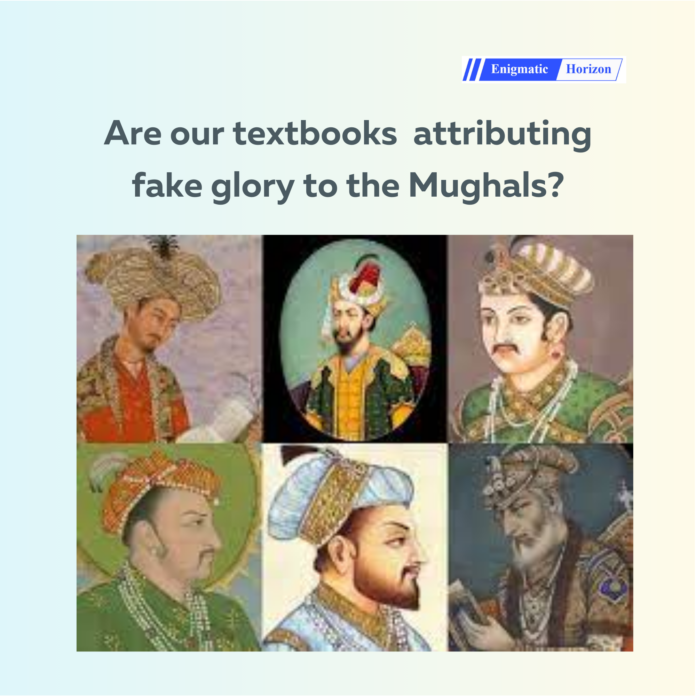Priyal Dholakia – Enigmatic Horizon Staff (Assistant Editor)
The glorification of the Mughal empire has always been a topic of heated debate. Be it academics, media, or films, the Mughals have always been shown in a glorious light. Following the recent NCERT (National Council for Education Research and Training) decision, this debate has gained even more momentum. NCERT has removed some chapters on the Mughal Empire from Class 12 history textbooks. As per the NCERT, this move was undertaken as a part of the syllabus rationalisation exercise. But it has received quite some flak from certain sections of society.
Those in favor of Mughal supremacy argue that the dynasty has contributed a lot to India’s heritage. But is this actually the truth? Or are the study-books concealing a darker reality under their covers? Let’s find out.
Textbooks have long been whitewashed with glorifying accounts of Islamic kings and invaders. They are filled with tales of glory in praise of the Delhi Sultanates, particularly the Mughals. There are narratives written about their amazing architecture, structural reforms, and culture. This offers a very skewed or one-sided representation of the facts. It tends to highlight the positives in great detail, with little or no mention of the negatives.
School books have always attempted to paint a glorious picture of the Mughals by projecting them in a heroic light. As per recorded history, the Mughals committed quite some atrocities against the general public and other Indian rulers during their rule. Evidence also claims that the Mughals demolished scores of ancient Indian sculptures and temples in an attempt to break our existing culture. But mentions of these things are nowhere to be found in school textbooks. According to written records, a lot of bloodshed, oppression, and persecution took place during the Mughal era. However, school texts conveniently sweep references to these heinous wrongdoings under the rug. One can see a conscious attempt in school books to portray Mughals as “heritage builders”, although many would prefer to use the term “culture destroyers” for them instead.
School books have lauded tyrannic invaders by honoring them with prestigious titles. For example, Mughal kings have always been referred to as “emperors” in textbooks. Akbar was conferred the salutation “Akbar – The Great.” Whereas, the same textbooks used the word “chieftain” to address the Indian warrior king, Chhatrapati Shivaji. It is a highly derogatory title to use to address any king, especially one of his stature.
Moreover, portions talking about Indian warriors like Chhatrapati Shivaji, Prithviraj Chauhan, or Chandragupta Maurya are scarce in Indian textbooks. Notable Indian dynasties like the Gupta dynasty, the Mauryans, or the Peshwa dynasty don’t even find their way into the majority of school texts. India has a rich history of valiant rulers. Like the Chola dynasty of South India, the Ahom Empire of the Northeast, and the Shunga empire, the list is exalted. The consequence is that most of the students are unaware of the contributions of these iconic rulers to Indian history. Instead of looking up to Indian legends as their role models, children may end up idolizing dictatorial invaders instead. Shouldn’t students be taught about these legendary icons who have preserved India’s honor instead of being taught about the “glory” of the Mughals?
One needs to view history through an unbiased lens. Offering half-baked depictions and distorted truths can lead to dangerous outcomes. It can blind an entire generation to the realities of the past. Hence, one needs to be careful and critical of what information is being published in the school textbooks. Otherwise, it can shape an entire era of misguided ideologies.
